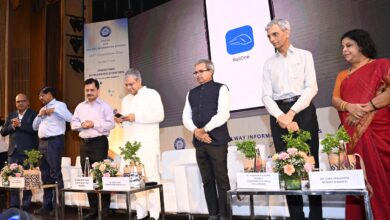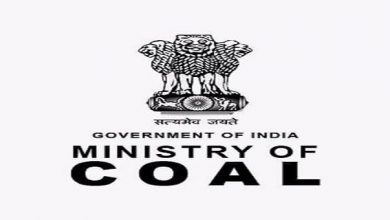Impact Of Climate Change & El Nino On Pattern Of Monsoon Will Make It Unpredictable
Experts are of the opinion that there will be lots of variability in rainfall during this season

During the ‘Long Range Forecast for Southwest Monsoon 2023’, India Meteorological Department predicted that monsoon season is expected to be normal in 2023. However, due to the effects of climate change, heat waves and El Nino, the experts are of the opinion that there will be lots of variability in rainfall during this season. This is something that is making weather patterns unpredictable.
Monsoon variability and Climate Change: Science have very clearly proved this, especially the IPCC AR6 report has clearly established that the climate change is here and now. So, even though IMD may say heatwaves or unseasonal rains are not because of climate change, I would humbly refute to what they are saying. We have been witnessing how farmers have been suffered by the changing monsoon patterns, early heatwaves and unseasonal rains. These are the signs of climate change because of global warming and this has been proven by the science again and again. Hence, I am not sure what they are saying is right because we see changes day in and out. Anybody who little bit of understanding of science would say this is not a climate change event.
Impact of El Niño on Monsoon 2023: 40% of El Niño years have resulted in normal or above normal Monsoon: This data might be true but ten there are 60% of chances when El Niño has impacted Monsoon. Why do we take smaller denomination than understanding the larger trends that shows that El Niñohas an impact on Monsoon rainfall patterns. This is the new normal. Instead of being in denial mode, we must face it. Only then we would be able to work towards adaptation and mitigation measures. These measures are of utmost importance at this point of time where we have been witnessing unprecedented incidents. In fact, by the time I say this there will new precedent and that too in a short span of 6-7 months, new records are broken. This is something we need to acknowledge and see what can be done about it. Instead of being in denial, I would say that IMD should acknowledge the fact that there is variability of rainfall, which has had impact on farmers and other climate sensitive sectors. This needs we need to do something about it. That is where answer lies in terms of finding solutions and coordinated action so that the last person is not affected from the whole problem.
Dr Anjal Prakash, Research Director, Bharti Institute of Public Policy, Indian School of Business and IPCC Author said that- It is a sign of relief that Monsoon is going to be normal to the tune of 96% but this is an average rainfall pattern we have witnessed so far for the entire India. However, the problem is that because of climate change there will be lots of variability in rainfall during the season. This is something that is making weather patterns unpredictable. Even though the average rainfall remains same but variability within the season may be sometimes devastating for the farmers as they may not get water when required or might get lots of water when not needed. That is what climate change is doing to farmers. Recent examples of this are of the hailstorm in Telangana, while Punjab saw crop damage due to early heatwave, followed by unseasonal rains thereafter. Such incidents tell us that even though average rainfall remains the same but it may not be the correct information to understand that variability of rainfall even exists. We have to take this into account and get into district or sub-district level forecasting to understand what is going to happen and how do we know what will be the rainfall pattern.
Raghu Murtugudde, Visiting Professor, Earth System Scientist at IITB and Emeritus Professor at University of Maryland said that- While an El Niño tends to produce a deficit monsoon, only about 60% of the deficit monsoon years have occurred during an El Niño year. This could be turned around to say that 40% of the El Niño years have resulted in normal or above normal rains. However, analysis of past monsoons shows that an El Niño that follows a La Niña year tends to be the worst-case scenario in terms of monsoon deficits. We have just emerged from a record 3-year La Niña and are likely heading into an El Niño. If the forecasts say the monsoon will still be normal, we need to wait and see what compensating factors may play a role. The most likely candidate is the accumulation of snowfall over Eurasia during the record La Niña years. One also needs to keep in mind that seasonal rainfall totals now have very little meaning considering the erratic distributions with extreme wet and dry spells expected in any monsoon year – normal, deficit or excess. Floods, droughts, crop damages, health impacts and such need to be dealt with as effectively as possible with short (days 1-3), medium (days 3-10) and extended (weeks 2-4) range forecasts. All states down to municipalities and panchayats have to pay attention to IMD warnings. However, despite the La Niña of 3-years long, the Eurasian precipitation has been slightly below normal which would favour a stronger monsoon and may offset the El Niño impact. Unclear if this is what is happening in the IMD forecast.
Can positive IOD save Monsoon 2023 against El Niño: Prediction skills for an IOD (Indian Ocean Dipole) remain low and even more importantly, the impact of IOD on the monsoon is not very robust. It is likely that the monsoon itself impacts the IOD. If an IOD does occur following a normal monsoon, then the chicken-and-egg narrative will play out again. But remembering that the monsoon is a monstrous heat source and IOD mostly occurs after the monsoon has nearly ended, we must focus on late season extremes in dry and wet spells. Such late season anomalies tend to come from outside the tropics as well; for ex., because of the planetary waves driven by Arctic warming and Arctic Sea ice anomalies. It is thus critical to understand what is driving the near-normal monsoon forecasts. As usual, it is important to hope for the best and prepare for the worst in terms of food, water, energy, health, transportation and other sectors.
The writer of this article is Dr. Seema Javed, a known Environmentalist, Journalist and Communications Expert




